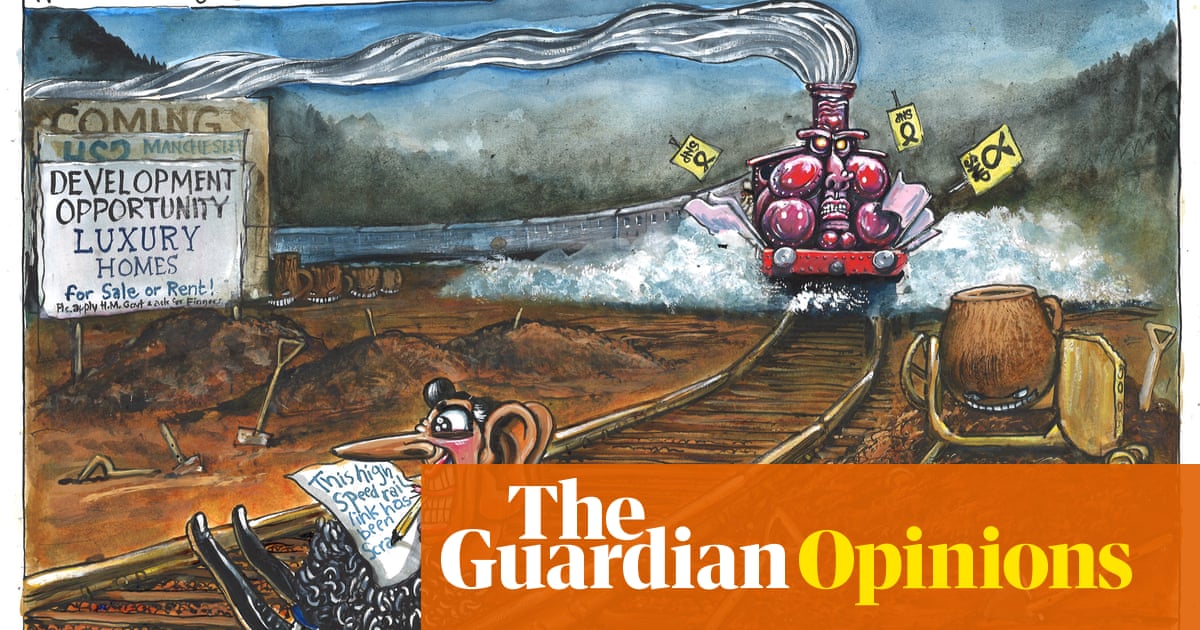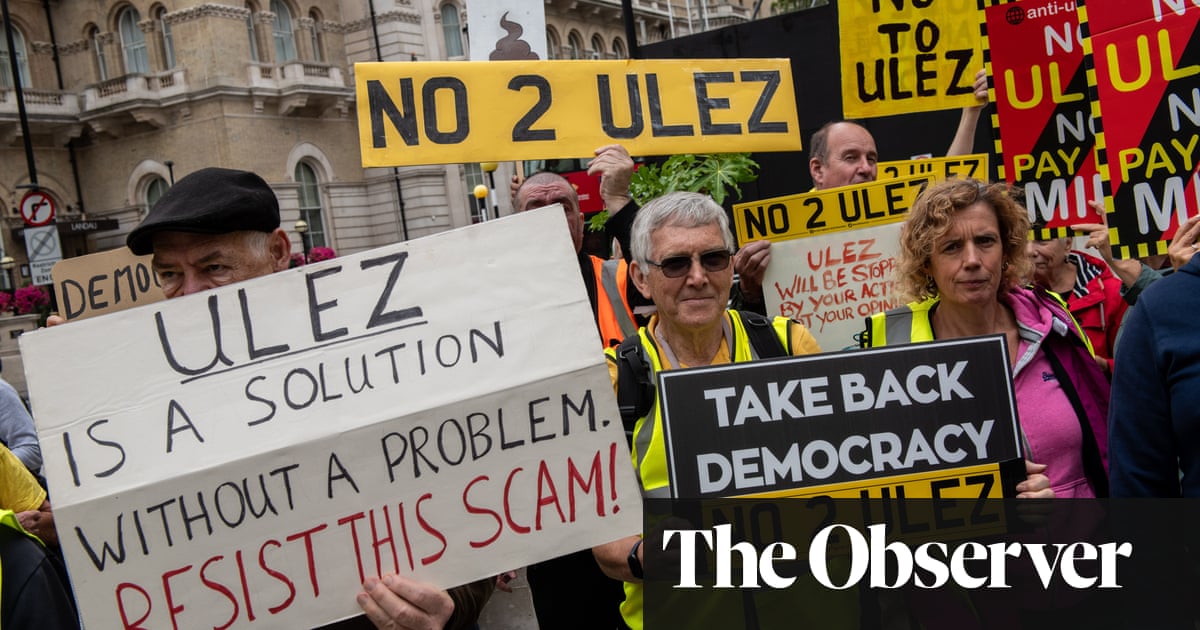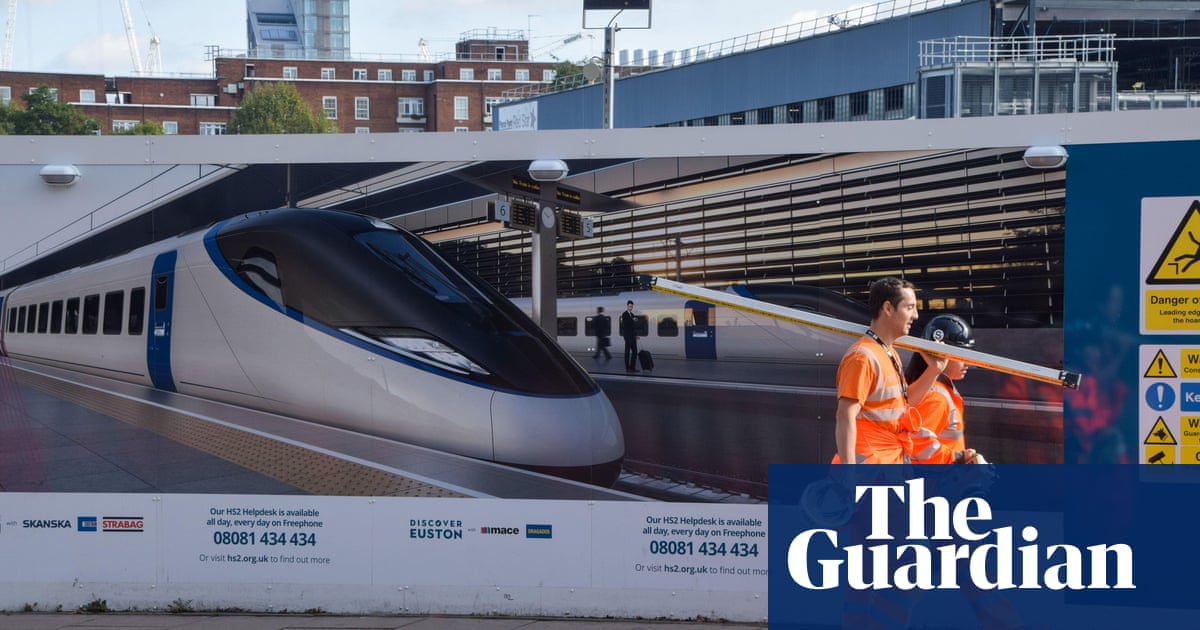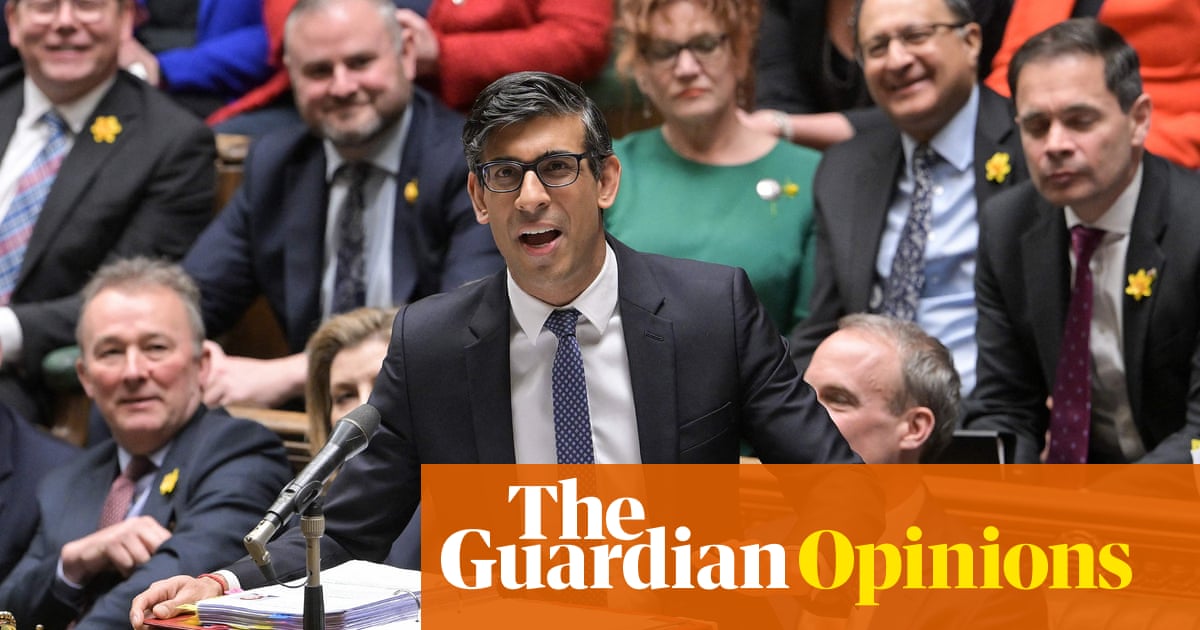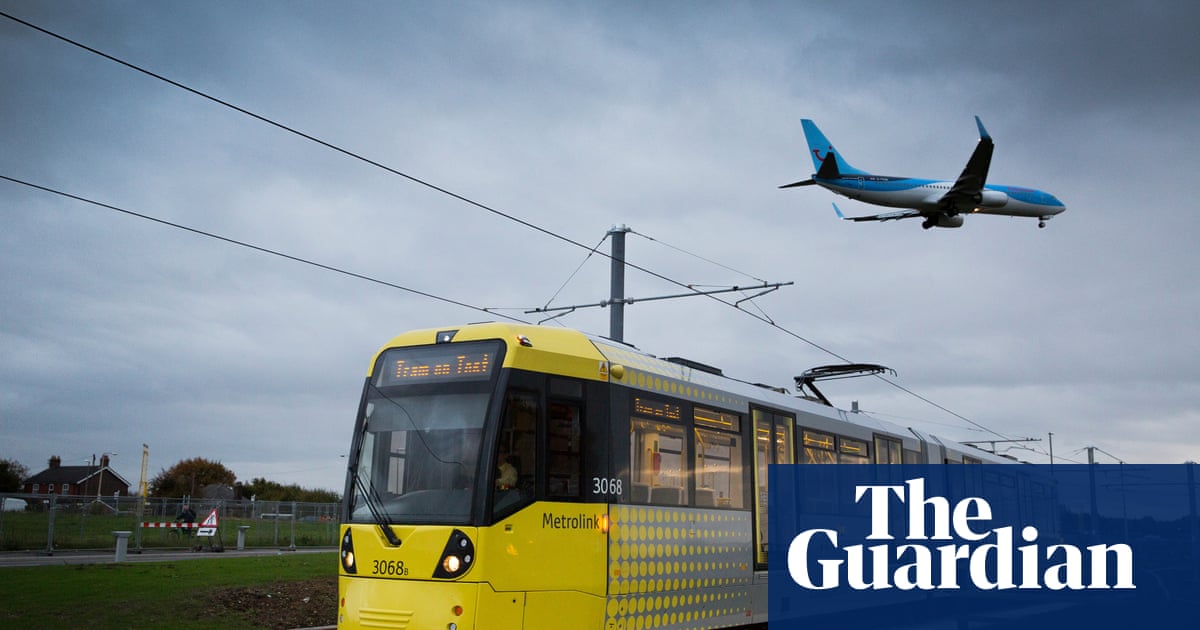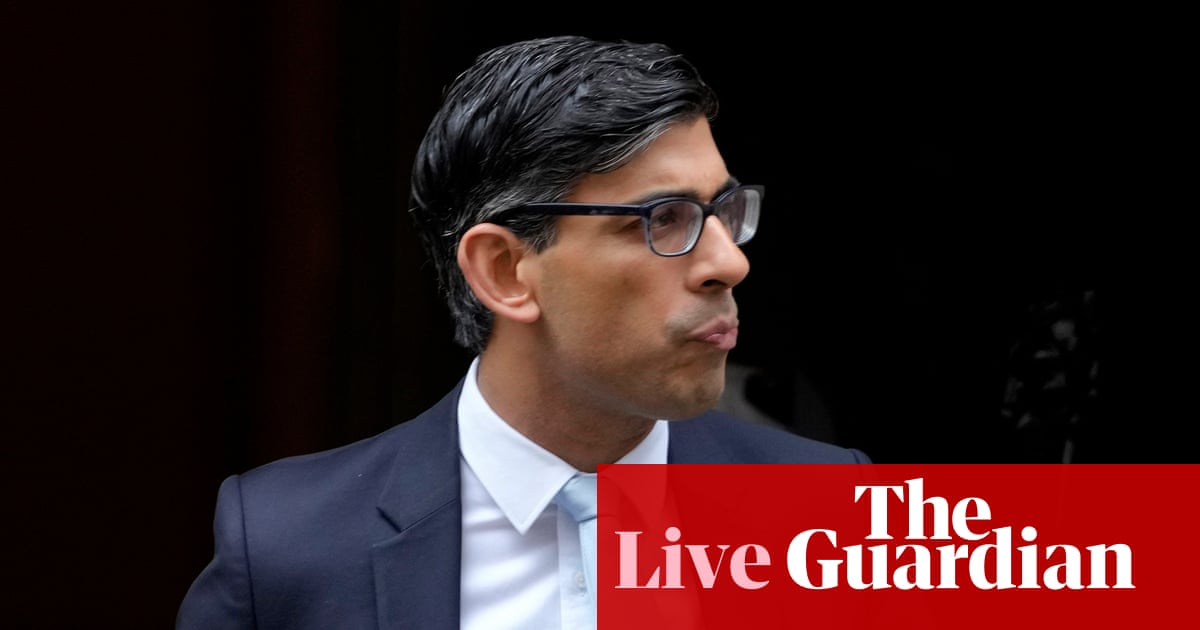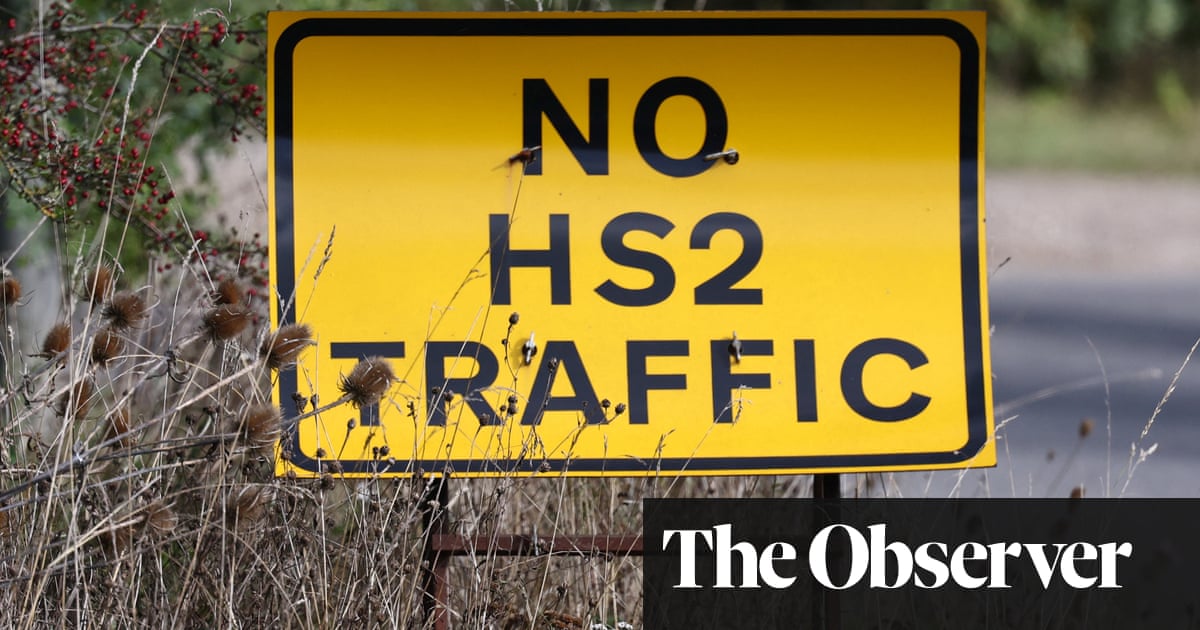
A prime minister who has no idea whether he will spend the money to complete the single largest infrastructure project in the UK can hardly be said to have a long-term plan. Rishi Sunak’s procrastination over the fate of HS2 undermines any faith the public and business might have in the government to bring together the expertise and funds to meet a significant challenge.
Such was the chaos inside No 10 on the eve of the Tory conference that the transport secretary, Mark Harper, could not answer even the most basic question asked of him on BBC radio on Saturday morning: have HS2 plans changed since June’s update to parliament?
Harper has occupied the transport minister’s chair for almost a year and understands the issues, but cannot say how or where the line will go while Sunak and his advisers row over the ultimate destination.
A high-speed rail link from London to Manchester with a spur to Leeds – as it was conceived by New Labour, backed by the coalition government and then Boris Johnson – was always going to be a complicated and expensive project. Laying new track across congested and wealthy parts of England, insisting on expensive tunnelling to keep it out of sight, was never a cheap option. The Treasury was sceptical from the beginning.
As with any large project, there was the potential for significant cost overruns driving up the final bill, and delays that would mean the service arrived many years late. It was reasonable for the public, having witnessed one government after another mismanage major projects, to believe that honest assessments would unearth every possible pitfall, putting a cap on the likely expense.
Now the government has revealed that it was hopelessly optimistic, or succumbed to the optimism bias from those it employed to implement the project. Sunak wants to engineer a rethink that some of his inner sanctum have hinted could result in the whole scheme becoming little more than a shuttle between west London and a terminus outside Birmingham.
Such a truncated version of the original plan would cut the north of the country from the south and lock in profound regional inequality for another generation. Worse, it would be a shock to the entire railway and engineering industry, undermining what credibility is left in the UK’s ability to build major infrastructure.
While it is true that London’s Jubilee and Elizabeth lines have proved astonishingly successful, both were over budget and late. It’s easy to find projects that have done worse. The Scottish parliament and the Edinburgh tram rank among the worst examples in the world for cost overruns. In the regions, huge sums have been spent on new nuclear power stations that already look likely to be delayed and over budget by a considerable margin, although the risks are being run by private companies.
One thread that runs through these projects is exceptionalism in their design. And how they lack the Lego-like quality that allows them to be modular and adaptable. The two tube lines have unique stations based on individual designs. The Scottish parliament looks like no other building, and so on. Each breaks the golden rule of project management, which says that everything has been done before. High-speed rail certainly has.
Compare London Underground and its line extensions with the Madrid metro, which added 81 miles of track and 76 stations in two stages of four years each between 1995 and 2003. As Bent Flyvbjerg and Dan Gardner point out in their new book, How Big Things Get Done, the metro managed to bring in its no-frills extension, minus architect-designed stations, in half the average industry time and at half the cost – with UK engineering firms on the list of contractors making them happen.
Spain’s ultra-cheap high-speed train network, also built without frills and at low cost, was initially derided as a white elephant before everyone started using it.
Which is why HS2 should still be built as a high-speed line. From an engineering perspective, it is achievable. It might take digging a cavern underneath Euston to build the 10 new lines needed for high-speed trains, but that is possible. It is Treasury meddling in the design that has raised costs. At the other end of the line, the government can negotiate with Manchester mayor Andy Burnham about the siting of a new station, though there should be a way for it to link with an HS3 traversing the Pennines from Liverpool to Leeds and Hull.
Of course Sunak can order a pause to check on why costs through the pandemic escalated, pushing the budget from £33bn towards £100bn. Contractors are no angels and price gouging across the economy by firms using the inflation crisis to bamboozle customers probably means HS2 is another victim.
It’s the manner of the pause that is problematic. At no point should Sunak’s commitment have wavered. That’s when doubt creeps in and stakeholders seek to extract what they can from the expected wreckage. It changes the psychology for the worse. Making a commitment is not a sign of weakness. It is the lack of commitment, especially from the politicians, that undermines these mega-projects.
The Germans and the Americans have run into the same problems. German railways are stricken by delays and procrastination between regional chiefs and party politicians about the direction of new routes. California’s high-speed link between San Francisco and Los Angeles covers only a few miles and is already in the pantheon of infrastructure disasters.
There is no doubt that to build major infrastructure, it takes the right team, detailed planning and a mode of working that breaks it down into bite-sized chunks. There should be more support for university engineering departments to nurture the pipeline of talent required.
Yet, ultimately, it takes determination on all sides of the political spectrum to make it work. That’s what sets France and Spain apart on this subject. There was a valuable political consensus on HS2. It has taken Sunak, the bookkeeper rather than the visionary, to break it. It is a trait to which the UK is sadly vulnerable.




